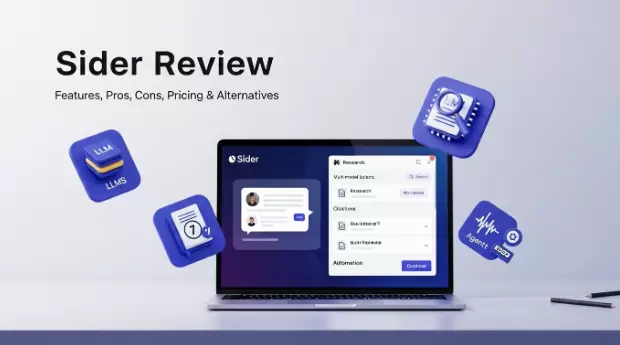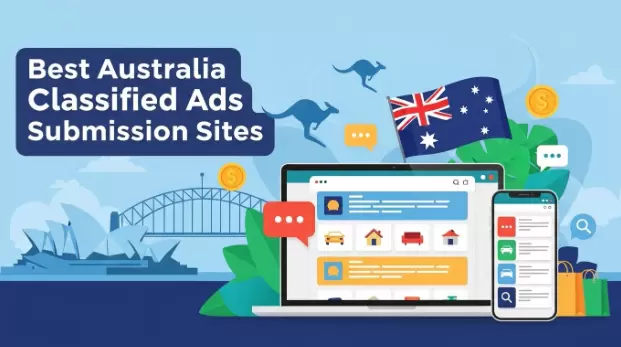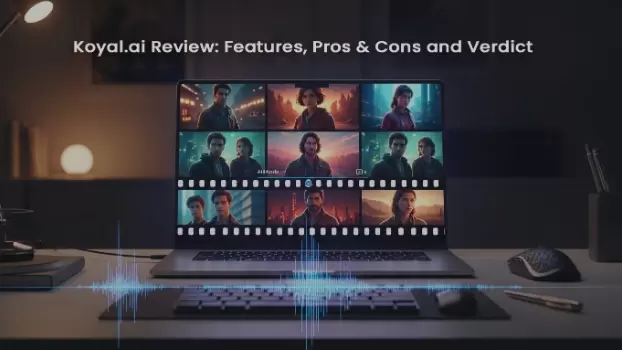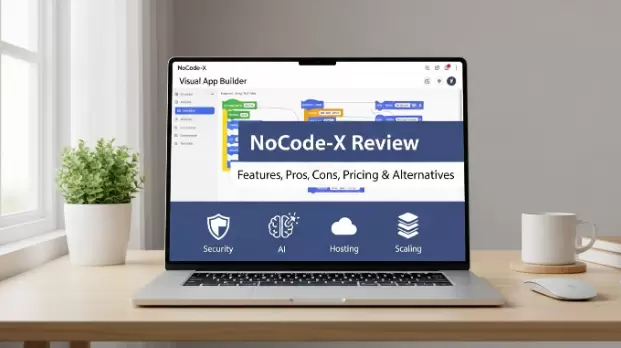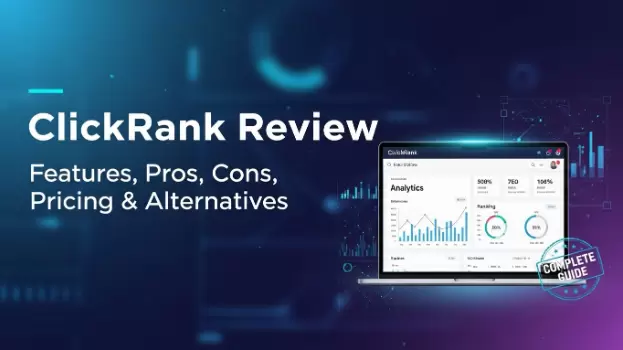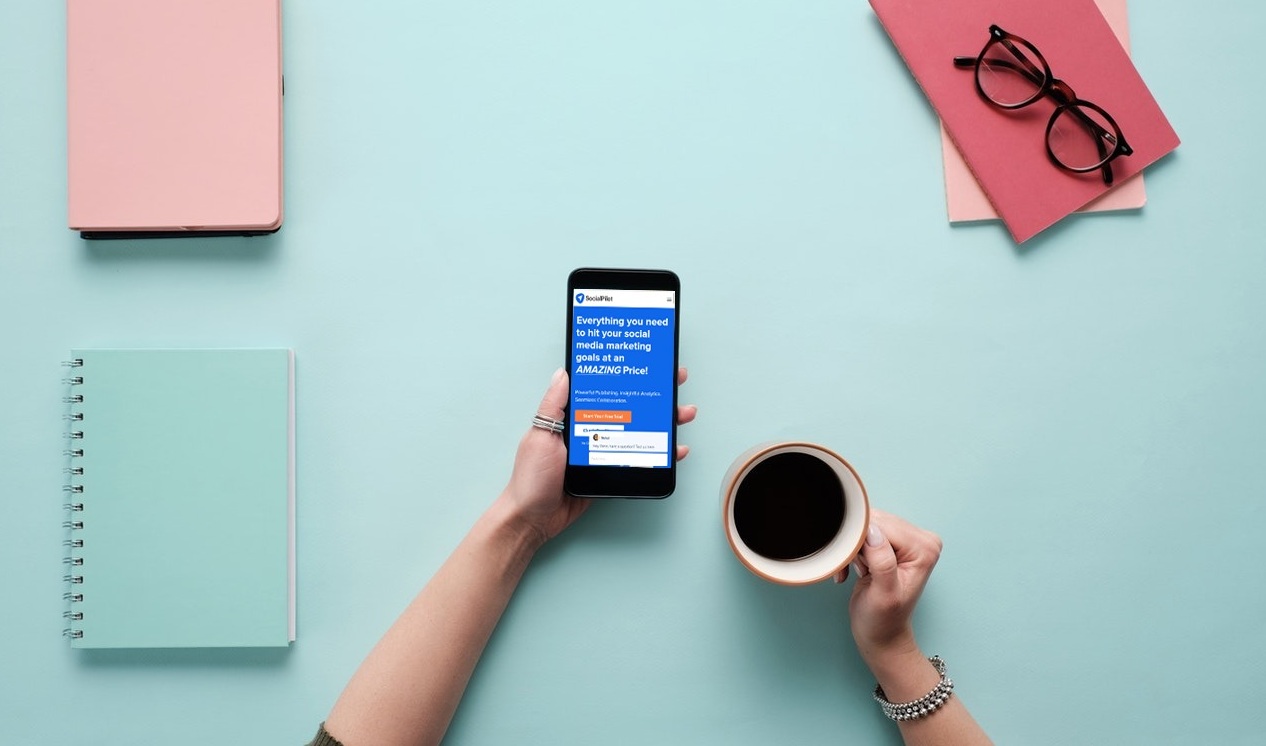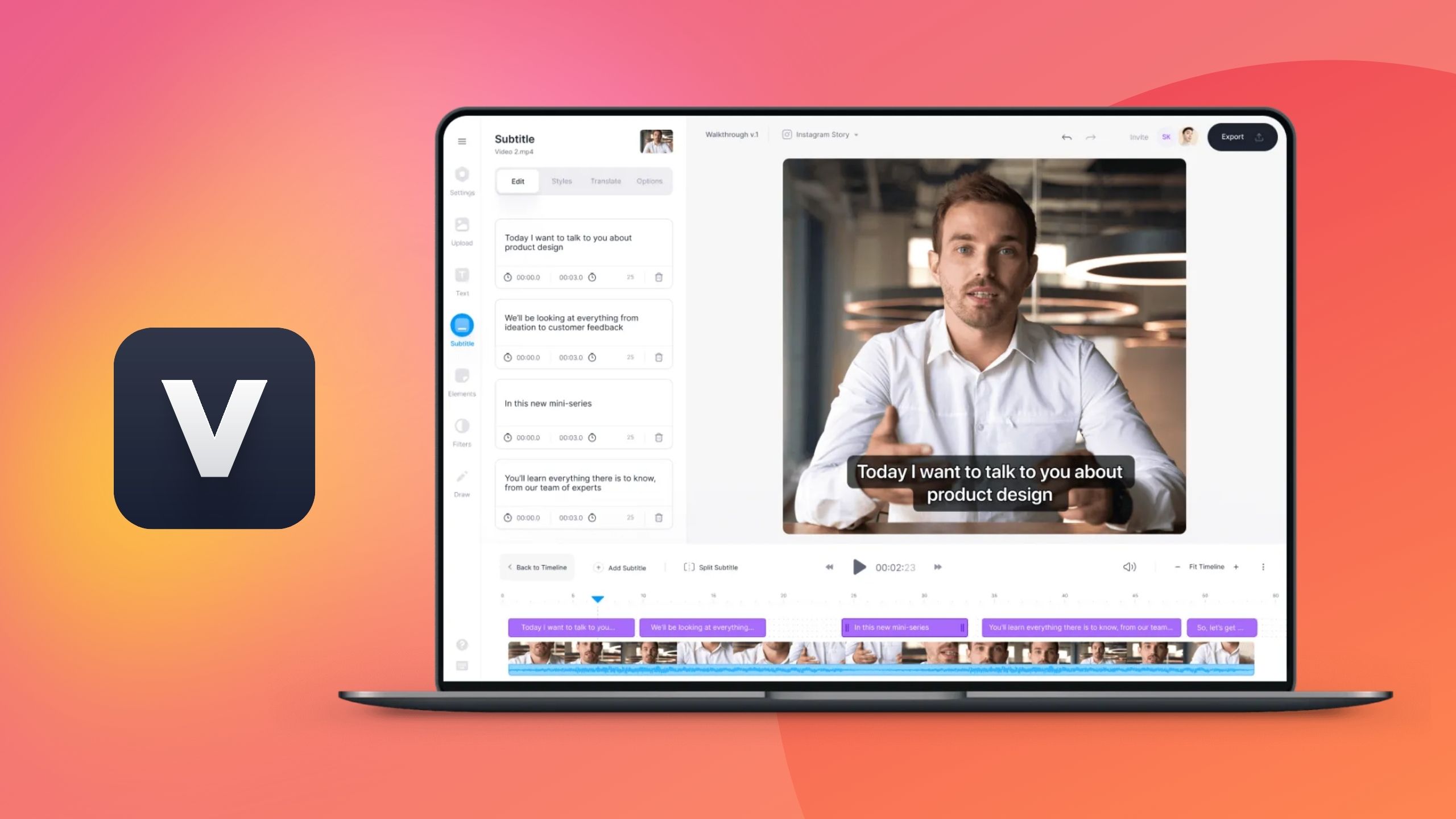In the age of AI-driven content creation, Napkin AI has emerged as a powerful tool for turning plain text into clear, professional visuals. Napkin’s mission is “to give everyone the power of visuals in their communication”.
In practice, it “transforms your text into visuals” – automatically generating infographics, flowcharts, diagrams and more from your words. With a user-friendly interface and no need for complex prompts, Napkin aims to make idea-sharing quicker and more effective.
As we step into 2025, Napkin continues to add new features (for example, recently introducing a “Custom Generation” mode for controlling visual type and layout. We will cover Napkin's features, pricing plans, pros and cons, and contrast it with competitors.
What Is Napkin AI?
Napkin AI is an AI-powered visual assistant that turns written content into polished graphics. It works directly from your text (no need to write image prompts), you can paste or import content, click “Generate”, and Napkin will suggest relevant charts, infographics, or diagrams based on that text.
The good news is that the images created are completely customizable. You can change styles, colors, and fonts, replace icons, and change connectors. This flexibility means Napkin can be valuable for anyone wanting to make diagrams and infographics for documents, presentations, or web content without doing any design work. Key highlights include:
- Text-driven graphics – Transforms paragraphs into infographics, flowcharts, mind maps or data charts automatically.
- Prompt-free workflow – simply paste your content and hit generate; Napkin analyzes the text and generates matching visuals.
- Fully editable output – Napkin’s visuals can be customized on the fly. Users can change icons, layouts, colors, and fonts after generation. Paid tiers even let you define custom style templates and upload brand fonts.
- Team collaboration – Napkin helps team collaboration by providing in-app commenting for feedback, real-time co-editing, and shared team workspaces. Think of it like Google Docs, but for images and charts! You can bring your team together by assigning different roles and inviting people to collaborate on visual edits in real-time.
- Multilingual support : while the interface is in English, but the AI is pretty amazing at creating images from text in over 60 different languages. So whether you're working in Spanish, Japanese, French, or dozens of other languages, it's got you covered!
In short, Napkin positions itself as a “personal visual expert” at your fingertips. It’s designed for anyone – business professionals, educators, content creators and more – who needs to communicate ideas visually without hiring a graphic designer.
Key Features of Napkin AI in 2025
AI-Powered Visual Generation:
Napkin’s core engine uses advanced AI (including large language models and image generation models) to interpret your text and produce appropriate visuals. For example, when you click the generate button, Napkin quickly produces a palette of diagram options (flowcharts, charts, mind maps, illustrations, etc.) that reflect your content.
The AI even tries to keep your exact wording intact if you prefer more faithful text, labeling. This makes Napkin far more tailored than generic AI art tools – it’s specifically built for diagrams and business visuals.
Customizable Design and Branding:
Every visual Napkin creates is fully editable. You can click on any element (icon, shape, connector) to swap it out or restyle it. Napkin provides a rich library of icons and “decorators” (smart shapes), plus flexible color palettes and font choices.
Napkin’s workspace feels like a blend of a note-taking canvas and a design tool: you freely move and edit visuals on the page, and toggle presentation aspect ratios (16:9 slides vs. long documents).
Collaboration and Teamwork: Napkin isn’t just for solo use. The Team space feature is pretty sweet — you can invite your whole crew into one shared workspace, where everyone can jump in and work on the same file together. People can drop color-coded comments (no more confusion about who said what!), and you get to decide who can view, add notes, or actually make changes to the content.
Keeping your stuff safe: Napkin takes data security seriously and follows all the industry standards to keep your work protected.
Boosted Productivity:
By automating the graphic design process, Napkin can save significant time. Creating a flowchart or infographic manually can take hours, but Napkin generates a first draft in seconds. Users report that it can quickly produce up to dozens of visuals for a report without tedious drawing.
Pricing
Napkin AI offers several pricing tiers for different needs:
- Free Plan (Beta) – $0 (forever in beta). Includes up to 500 AI credits per week (roughly 1 credit per word of text) along with unlimited visual editing and file imports (PPT, DOC, PDF, HTML, MD). Exports to PNG and PDF are unlimited.
- Plus Plan – $9 per person/month (billed monthly). Includes everything in Free, plus 10,000 AI credits per month, unlimited PPT and SVG exports, removal of Napkin branding, and team management/billing features.
- Pro Plan – $22 per person/month. Includes all Plus features plus 30,000 AI credits per month, unlimited custom styles, ability to upload your own fonts, and “exclusive” design assets.
- Enterprise – Custom pricing for large organizations. Enterprise customers get advanced collaboration features, team management, volume pricing, and dedicated support. Contact Napkin AI for details.
Note: You can get a 25% discount by choosing annual billing. Payments are via major credit cards, and you can change or cancel plans anytime. (If you cancel, you keep access to your content but lose paid features after your billing period.) For current pricing and trial promotions, see Napkin's pricing page.
Pros & Cons
Pros:
- Fast Design: Automatically generates diagrams and infographics, reducing manual design time. Users have noted Napkin is a “game-changer” for quickly making presentations.
- Easy to use: The interface is simple and straightforward — most people can learn the basics within minutes.
- Robust export options: Supports export to PPT, PDF, PNG, SVG, making it easy to use graphics anywhere.
- Free beta access: There is a free tier and pro options for free during the beta, so you can use it extensively before paying.
Cons:
- Desktop-only editing: Napkin’s creation tools currently only run in desktop browsers (mobile view is read-only). A mobile editing version is “coming later.”
- Dependency on credits: The free plan’s 500 credits/week may be limiting for very heavy users (e.g., converting entire books). You’ll hit usage limits if you generate a lot of text per week.
- Some editing overhead: AI-generated visuals often need minor tweaks. Users must still review and adjust layouts or text for best results.
- Not perfect with abstract text: Napkin shines with clear logical content, but may misinterpret or oversimplify very creative or abstract passages. In practice, poetic or vague text sometimes produces generic “brainstorm” diagrams that need manual refinement.
- Potential redundancy: The style library is rich but not infinite; over time, some users feel the visuals reuse similar templates, limiting creativity.
- Processing speed: Large documents or complex graphics can take several seconds to generate. You must wait for one image to finish before starting another.
Who is Using Napkin AI?
Napkin AI’s flexible approach appeals to a wide range of users. For example:
- Business Teams & Professionals: Marketing professionals, consultants, and project managers use Napkin to quickly generate strategy diagrams, and reports.
- Content Creators & Bloggers: Writers and bloggers use Napkin to enhance articles and white papers with custom infographics and flowcharts. Rather than hunting for stock images, they generate relevant visuals that directly reflect their text.
- Marketing & Social Media Teams: Social media managers use Napkin for eye-catching posts and ads. The tool’s ability to export in formats like LinkedIn’s banner sizes or Instagram posts (via PNG export) makes it handy for content campaigns.
In short, anyone who wants to convert text into an image can benefit from it. Napkin's flexibility is such that it is used in business meetings, in web-based collaboration, and even by solo entrepreneurs.
Which Features Make Napkin AI Unique?
Napkin stands out in the AI design landscape through its text-first focus and visual specialization. Unlike general AI art tools, Napkin doesn’t make you craft image prompts; it works directly from your writing.
This means it automatically figures out what graphics fit your content, streamlining the workflow for non-designers. As Napkin’s FAQ puts it, it’s like having a “personal visual expert” at your fingertips, ready to bring ideas to life.
Another unique aspect is the emphasis on business-style visuals. Napkin isn’t trying to create photorealistic images or abstract art—it specializes in infographics, flowcharts, mind maps and other diagrams that clarify concepts.
Its built-in library of connectors, icons and smart shapes reflect this focus. With the ability to fully customize and brand any infographics, Napkin combines the power of AI with an interface much like design tools used before we had AI.
Finally, Napkin’s collaborative features (team workspaces, commenting) and robust import/export make it more than a standalone app. It fits into team workflows and content pipelines in a way many single-purpose AI tools do not. All these factors – text-based generation, editable professional layouts, and team integration – combine to make Napkin AI a distinctive visual tool in 2025.
Alternatives to Napkin AI
There are several other tools in the AI-graphic space. Notable alternatives include Piktochart and Venngage, which now offer AI-assisted infographic generators. These are primarily template- driven infographic makers with new text-to-graphic features.
For more diagram-focused work, Lucidchart and Miro are popular (though they rely more on manual creation and collaboration than on AI).
Canva and Microsoft Designer provide broad graphic design capabilities (Canvas has a “Magic Design” feature, and Designer creates social media graphics from text) that can overlap with Napkin’s use cases.
Presentation tools like Prezi or startup-specific tools (e.g., Slides.ai, Beautiful.ai) can also serve for visual storytelling.
Each alternative has its strengths – for example, Lucidchart excels at engineering and network diagrams, while Canva/Designer excel at polished slides and posts. By contrast, Napkin’s sweet spot is quickly turning existing text into structured business visuals.
As one AI blog notes, “some of the most notable [Napkin AI] alternatives include Piktochart, Lucidchart, Miro, Prezi and NoteGPT”. The best choice depends on your workflow: if you need full slide decks you might try Google Slides with AI plugins; for simple infographics Piktochart or Venngage; for creative freedom a tool like DALL-E or Midjourney (though these aren’t structured for diagrams).
Conclusion
Napkin AI is a promising tool for 2025 that bridges writing and design. Its intuitive, text-centered approach truly does “transform text into visuals”, making it easy to turn reports, documents, or articles into engaging diagrams without manual design.
The flexible editing features and rich export options mean the output can fit professional needs. During its free beta period, Napkin offers very generous capabilities (including Pro features at no cost), so now is a great time to experiment.
If you frequently need to convey ideas visually, Napkin AI is worth trying. It may not replace expert designers for complex graphic work, but for quickly generating clear, branded visuals from your own text, it’s a unique and powerful assistant in your toolkit.
Frequently Asked Questions
Q: How does napkin AI work?
Napkin AI is an artificial intelligence tool that transforms text into visual charts, graphs, or other images. When a user provides text, Napkin AI can create relevant images which the user can modify to various fonts, colors, and icons.
Q: Is Napkin AI worth it?
If you are looking for a simple, quick way to generate text to image on a very small scale, it might be a good idea to try Napkin AI. However, Napkin's image-making capability does not offer the same functionality or control over image production that other design tools would.
Q: Does Napkin AI store data?
Napkin AI follows industry standards for data protection and confidentiality. If you prefer not to share your data with Napkin, they will not utilize your data to train their models.
Q: Can I use Napkin-generated visuals without any copyright issues?
YES! Since everything Napkin generate is completely editable, According to Napkin AI's documentation, you are free to use them on your website, presentations, or any other platform as they are not subject to copyright.
Q: What if the AI generates something completely wrong for my content?
Don't worry! You can modify everything Napkin creates-the icons, movement, colors, anything you want.

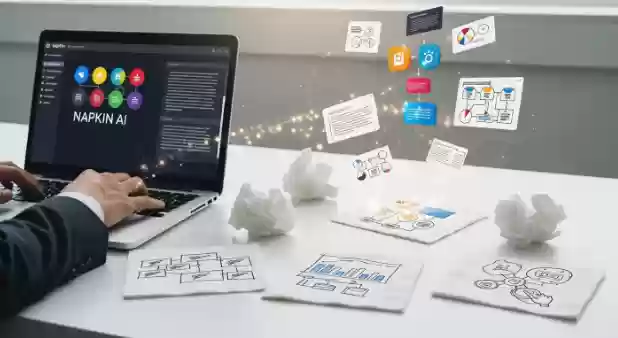
 Table of Content
Table of Content
